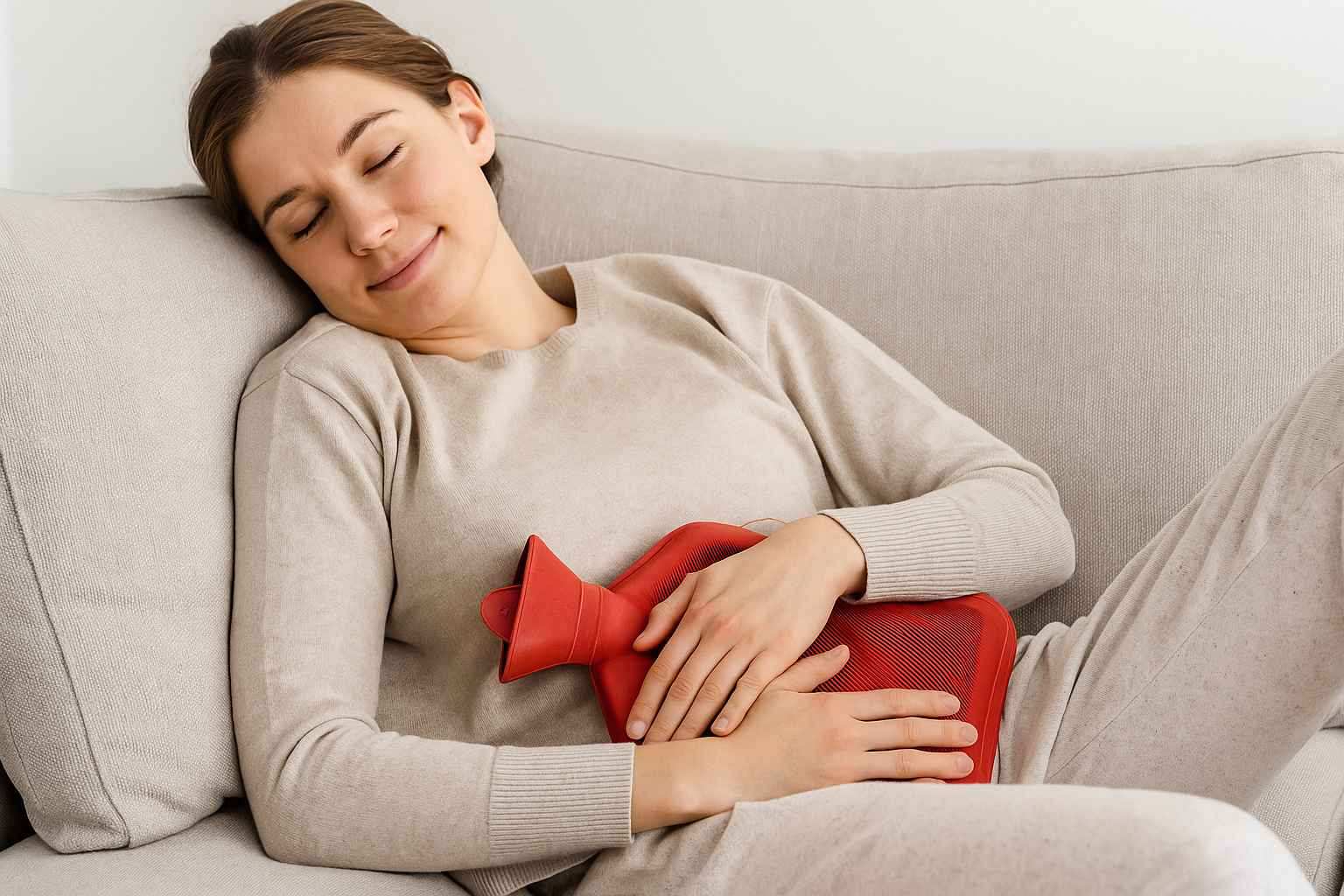Stress is one constant thing in this life that we all must express at some point. While, to some extent, it is good, as it helps keep us alert and motivated, it is also dangerous to our health. It can cause health issues like headaches, stomach upset, insomnia, depression, and even sexual challenges that can make you visit your medical doctor. However, with the inner gate acupuncture point, you can manage stress by yourself.
The Inner Gate acupuncture point is a pressure point that is effective in relieving one of stress. When combined with other acupuncture points, the Inner Gate or PC-6 can help you live healthier and save you huge medical costs. The good thing about pressure points is that they are easy to use, effective, and without side effects.
So, in this article, I’ll show you the many benefits of the inner gate pressure point when stimulated alone or with other pressure points and how to effectively stimulate it.
Where Is The Inner Gate Acupressure Point?

The Inner Gate acupressure point is also called PC-6 which is the short form for Pericardium 6. You’ll find this pressure point on your hand. To locate it, face your palm upwards, then place three fingers on your hand from your wrist crease. The point where your index finger rests, between two tendons, is PC-6 or the inner gate.
Now, I’ll proceed to explain the health benefits of PC-6 and how to effectively stimulate it.
Acupoint: PC-6 (Other Names: Pericardium-6/Nei Guan/Inner Pass)
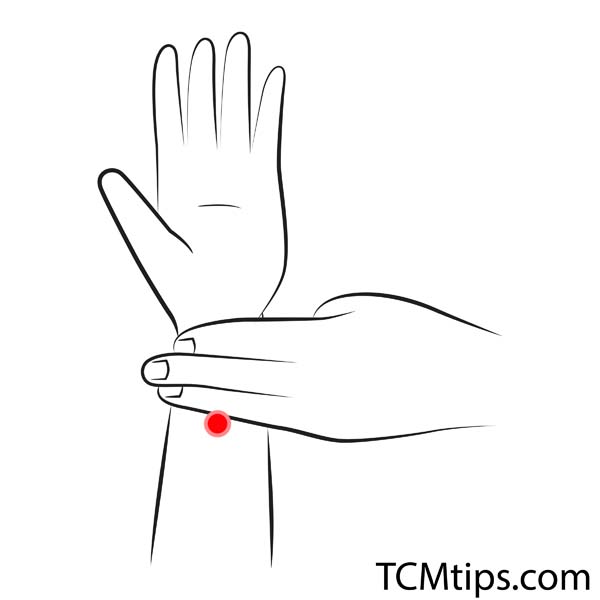
Pericardium 6, PC-6, Inner Gate, or Neiguan is one of the most effective acupoints for relieving stress. As explained earlier, you’ll find PC-6 in your lower hand, three finger-width from the crease of your wrist, between two tendons.
In Traditional Chinese Medicine (TCM), this pressure point on the forearm is responsible for opening up the chest, regulating the heart, and calming the Shen. Because of its range of clinical usage, it is a popular acupoint. It’s the acupoint you want to stimulate to relax your mind.
The inner gate acupuncture point is also used clinically to relieve insomnia, anxiety, irritability, nausea, and motion sickness. It has the effect of relaxing the mind and has the effect of relieving insomnia, anxiety, and irritability. It also works well for motion sickness and has the effect of relieving nausea.
A 2009 research found that stimulating PC-6 can reduce the chances of patients having nausea or vomiting after anesthesia or surgery. All you have to do to enjoy the benefits of this acupoint is to locate the pressure point, place your thumb on the spot, and apply gentle pressure on it for 5 minutes.
Now, let’s discuss the other uses of the inner gate acupuncture point when combined with other acupoints.
For Autonomic Disfunction
To understand autonomic dysfunction, you first have to understand what the autonomic nervous system (ANS) is. ANS is the nervous system that controls basic functions like heart rate, body temperature, and sensations, and it is made up of the sympathetic autonomic nervous system (SANS) and the parasympathetic autonomic nervous system (PANS). So, autonomic dysfunction is damage to the ANS.
In Traditional Chinese Medicine, when you’re frustrated and angry, your liver is affected, and your liver controls the autonomic nerves. Also, stress makes your qi and flow of blood stagnant. You’ll need to stimulate the following acupoints to be able to balance your sympathetic and parasympathetic nerves when you have autonomic dysfunction.
Acupoint: PC-6 (Other Names: Pericardium-6/Nei Guan/Inner Pass) and Acupoint: HT-7 (Other Names: Heart-7/Shen Men/Spirit Gate)
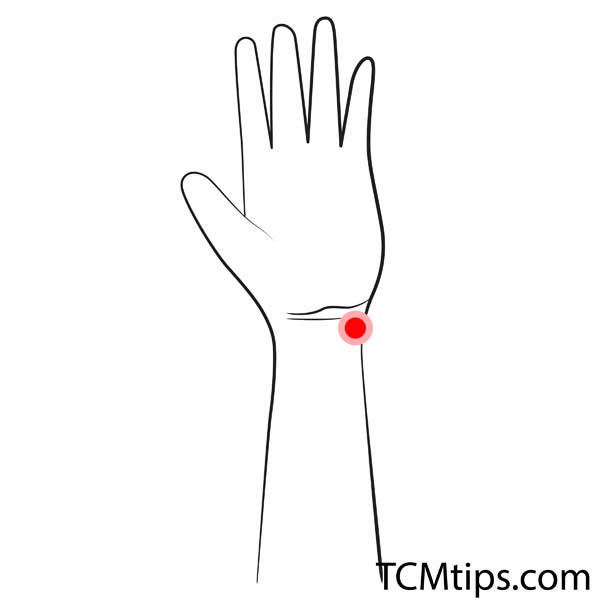
When you have autonomic dysfunction, HT-7 is the acupoint to push, alongside PC-6. HT-7 is called Shenmen in Chinese, which means Spirit Gate in English. You’ll find this acupoint in the crease of your wrist, at the hollow at the position of the little finger.
On its own, HT-7 is one of the heart meridian points that are effective in curing insomnia, cardiac pain, and epilepsy. A 2011 research supports the effectiveness of acupuncture at a number of acupoints, including PC-6 and HT-7, in improving sleep, reducing anxiety, and treating headaches.
For Relaxation
When you feel like you’re stressed out and need to relax, here are the acupoints to massage:
Acupoint: PC-6 (Other Names: Pericardium-6/Nei Guan/Inner Pass) and Acupoint: Liv-3 (Other Names: Liver-3/Tai Chong/Supreme Rush)
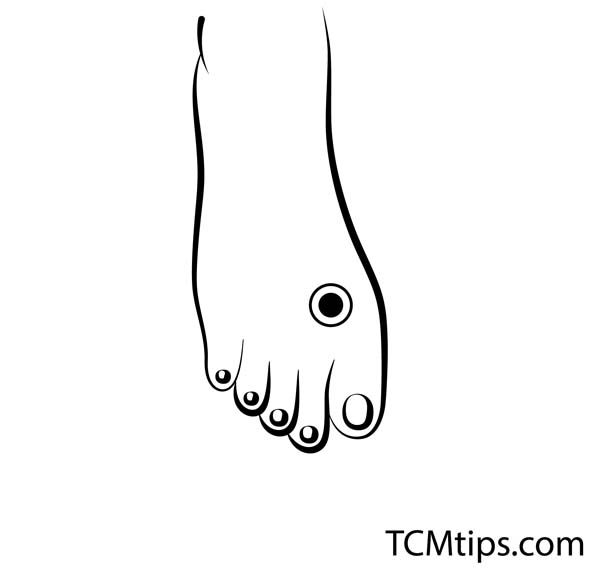
The inner gate acupuncture point, combined with Liv-3, is the most effective acupoint for relaxation. While PC-6 will help you release the tension around your chest and deepen your breathing, Liv-3 will help reduce tension and unclog your chest.
Liv-3 is also known as Taichong or Great Surge. It is located on the top of the foot, at the depression at the junction of the bone of the great toe and the next toe.
Stimulating Liv-3 alone will relieve you of headaches, stop vertigo, and reduce any swelling or pain in the eye. It is one of the acupressure points for blocked fallopian tubes as well as an effective acupoint for regulating menstruation.
For Meteoropathy
Meteoropathy is a disorder that arises as a result of changes in atmospheric pressure. It can either be that the pressure is heavy (which improves blood flow through increased pressure in the blood vessels) or light (which slows blood flow and increases swelling due to the low recovery power of waste products). You need to stimulate the acupoints below when you have low atmospheric pressure.
Acupoint: PC-6 (Other Names: Pericardium-6/Nei Guan/Inner Pass) and Acupoint: GB-41 (Other Names: Gallbladder-41/Zu Lin Qi/Foot Governor of Tears)
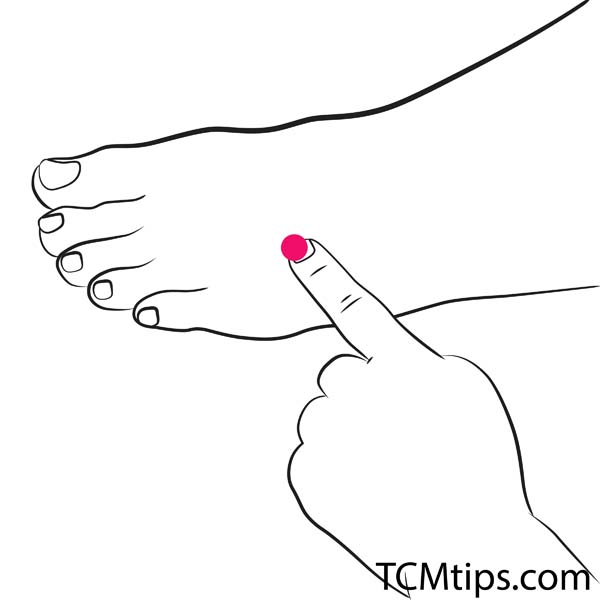
GB-41 and the inner gate acupuncture point are the right acupoints to stimulate together when you have meteoropathy. GB-41 is called Zulingqi in Chinese, which means Foot Falling Tears in English. This gall bladder meridian acupoint is located on the top of the foot just like Liv-3. However, you’ll find it in the hollow at the junction of the fourth and fifth toes.
In TCM, Zulingqi helps in moving the liver Qi, and it benefits the eyes and breasts. It is for this reason that GB-41 is mostly used to treat breast distention, eye redness, and eye pain. It is also among the pressure points for migraines relief.
For Palpitations And Arrhythmias
When you find out that your heart is beating faster than normal, then you have palpitation and stress can cause this. Heart palpitations shouldn’t cause so much worry unless you also discover that the heartbeat is also irregular, in which case you’re having an arrhythmia. For this condition, stimulate the acupoints below.
Acupoint: PC-6 (Other Names: Pericardium-6/Nei Guan/Inner Pass) and Acupoint: PC-4 (Other Names: Pericardium-4/Xi Men/Xi-Cleft Gate)
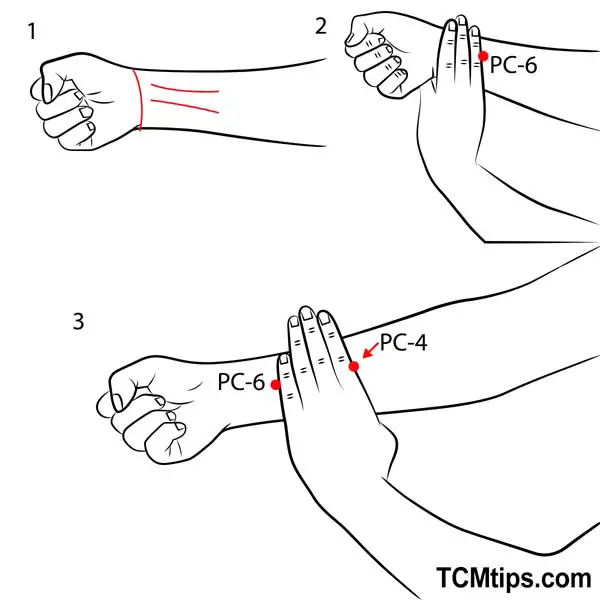
For palpitations and arrhythmias, the inner gate pressure point and another pericardium pressure point – PC-4 – are the acupoints to stimulate. PC-4, Ximen, or Xi Cleft Gate is located on the lower arm like PC-6. In fact, it is just four finger-width from PC-6.
Because PC-4 calms your excitement and regulates your heart rate, it is among the acupressure points for heart palpitations, cardiac pain, and epilepsy. A 2012 research supports the use of PC-6 in regulating heartbeat. The research found that stimulating PC-6 produces an antiarrhythmic effect that is beneficial to persistent and paroxysmal atrial fibrillation (AF) patients.

Try our Anti-Aging Gua Sha Tool designed to bring out your skin’s natural glow.
Best Gua Sha Product- Anti-Aging: The tool is designed to target 11 specific aging signs such as wrinkles and sagging skin. By following the 7-step routine, users can improve skin firmness and reduce fine lines naturally.
- Enhances Skincare Routine: It works effectively with serums and lotions, boosting absorption and efficacy of skincare products.
- Visible Skin Improvement: Users can expect a smoother complexion, reduced puffiness, and a more youthful appearance.
 P. Sze
P. Sze 




